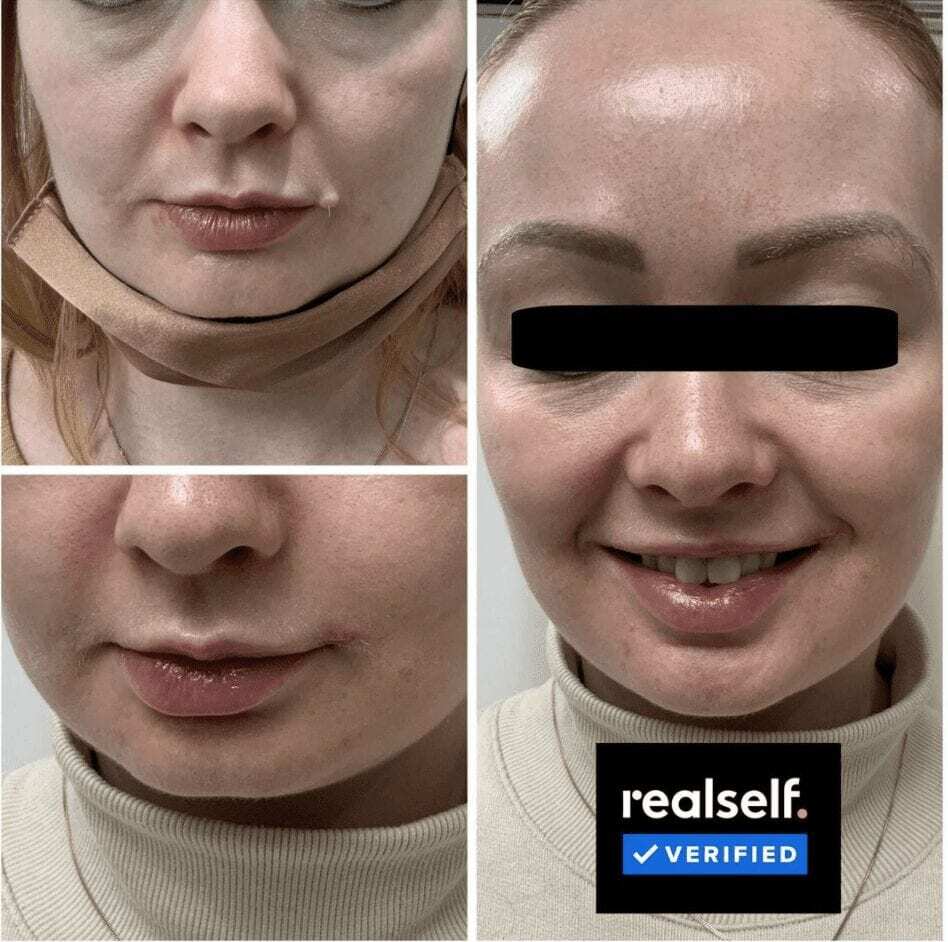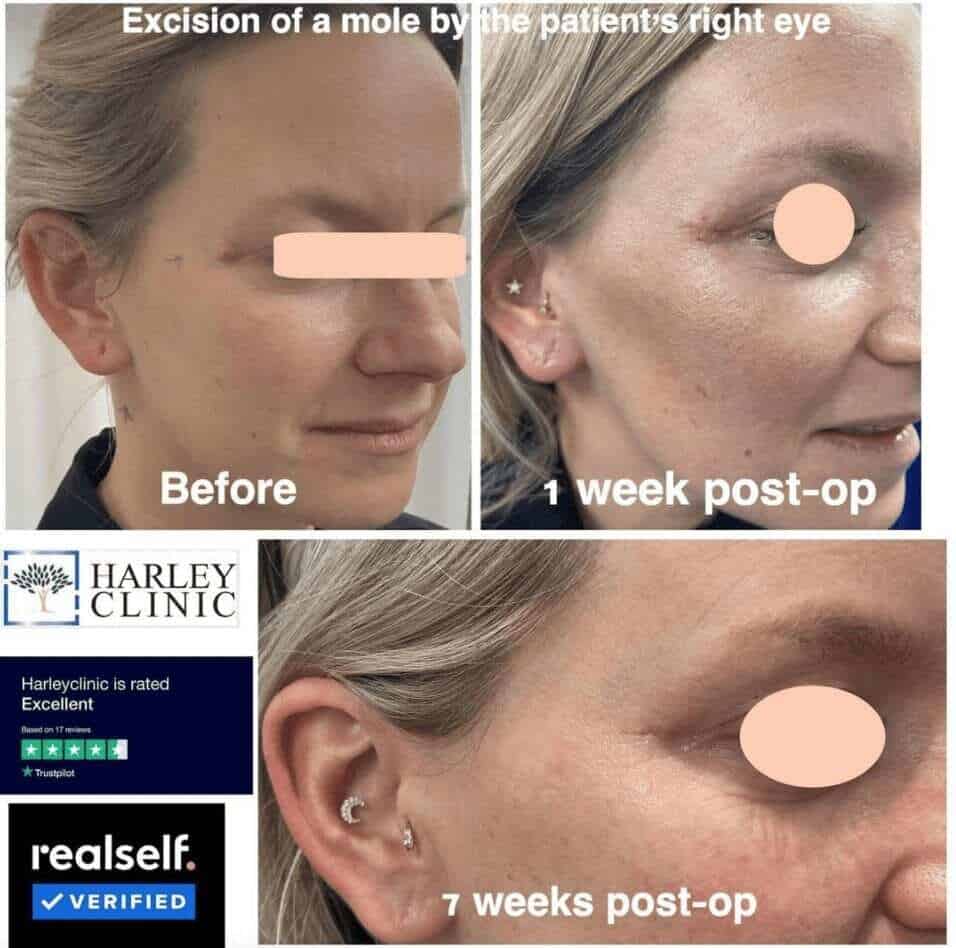Moles are not usually a cause for concern. Instead, they tend to be a cosmetic problem. In general, there isn’t anything to worry about. But if you do see a mole changing, itching, or bleeding, you must make an appointment for a check-up. You may decide you want to get a mole removed for aesthetic reasons. To remove a mole, it’s essential that you understand your options, benefits, risks, and the recovery process.
Causes and Types of Moles
A mole is a growth on the skin. It’s caused by abnormal growth cells in the skin. It can appear as dark or coloured spots on the body, which can be flat or raised. Moles don’t always mean cancer. It’s actually very common to have moles.
While some moles are present at birth, others can develop over your lifetime. There are three main types of moles:
- Congenital moles – these are present at birth.
- Acquired moles – you develop these later in life.
- Atypical moles – these moles are at a greater risk of being cancerous.
Most moles are harmless, but it’s important to be aware of any changes to your moles and skin. Most harmless moles have a round or oval shape and a clean edge. They can feel smooth, rough, flat, raised, and even have hair growing from them.
When moles change colour, have uneven borders, bleed, itch or become crusty, raised, or larger, you should contact your GP to get it checked.
The earlier melanoma is found, the easier it is to treat. It’s important to check your moles and understand what your skin usually looks like, so you can spot changes. Cancer Research UK use the ABCDE list to explain what you should look for:
- A – asymmetrical
- B – border
- C – colour
- D – diameter
- E – evolving
How Can You Manage Moles?
In terms of managing moles, one of the best things you can do is protect your skin from the sun. Protection and prevention are key. Sun exposure can trigger changes in moles. This is why it’s so important to protect your skin from the sun.
UV light from sun exposure can increase the chances of a mole becoming cancerous. If you have a lot of moles or pale skin, you need to be especially careful in the sunlight. Here are some tips to be safe in the sun:
- Stay in the shade when the sun is at its strongest
- Regularly apply high-factor sunscreen (at least SPF 50)
- Avoid sunbeds or sunlamps
In addition to sun protection, you should get into the habit of self-examination. This helps you to keep an eye on any changing moles. Like a lot of things, early diagnosis is a major part of successful treatment.
Although moles may not be medically serious, they can make you feel self-conscious. If you have moles in hard-to-cover areas, makeup tends to do little to cover moles. For removing moles, you tend to have a few different options:
- Surgical excision
- Shave excision
- Laser mole removal
What is Surgical Mole Removal?
Before removing a mole, your surgeon will carefully evaluate and diagnose it. Generally, a doctor will be able to diagnose a mole by looking at it. During a skin exam, your doctor will inspect the mole. If they think that it could be cancerous, it would be removed and sent to a lab for testing. If your doctor gives you the go-ahead, you can then discuss surgical mole removal.
With surgical mole removal, the entire mole is removed along with the border of the surrounding skin. First, the area will be cleaned to limit infection, before using a local anaesthetic to numb the area. To remove the mole, your surgeon will make an oval cut around the mole. Your surgeon will cut around it and then close the area with stitches. You will have a small scar that will fade over time.

Mole Removal Scar: What to Expect
Your mole removal scar will take about 2 to 3 weeks to heal from the surgery. After the initial healing time, the scar will continue to fade. Proper wound care is essential for avoiding infection. Your plastic surgeon will give you instructions for mole removal scar care after your procedure. Most mole removal scars should be healed within a month, but it may take longer with a deeper incision.
As with any procedure that uses an incision, there will be some scarring. However, your surgeon will do everything possible to make the scar as small as possible. Over time, the scar should fade and hardly be visible.
What are the Benefits of Surgical Mole Removal?
Mole removal can help stop the spread of cancerous and pre-cancerous cells. At the same, it can help to address any aesthetic concerns you may have about the mole. Results from the procedure are permanent. Surgical mole removal can help to make skin clear and smooth. If you have dark moles that are difficult to cover up, it can improve your confidence and boost your self-esteem.
Another benefit of surgical mole removal is that it significantly reduces skin irritation if you have a mole in an area that rubs against clothing or jewellery. Mole removal is considered safe with thousands of procedures performed in the UK for both medical and aesthetic reasons.
Facial Mole Removal at the Harley Clinic


What are the Potential Risks and Sides Effects of Mole Removal?
When deciding to go ahead with any plastic surgery, you must be aware of any risks. Potential complications include:
- Infection
- Bleeding
- Pain
- Scarring
- Wound breakdown
- The mole may come back, and you may need a larger operation
How Long Does it Take to Recover from Surgical Mole Removal?
You should be able to go home soon after the procedure. In a few days, you will come back so that your surgeon can inspect the area. Most mole sites completely heal in less than a month. While pain is uncommon, there may be some itching and tenderness present. You should feel back to normal within days to weeks.
If you’re concerned about a mole, contact the team at the Harley Clinic to discuss your options and create an individualised treatment plan.












This site is great, I really appreciate how you put up the information. Gustavo Ailsworth